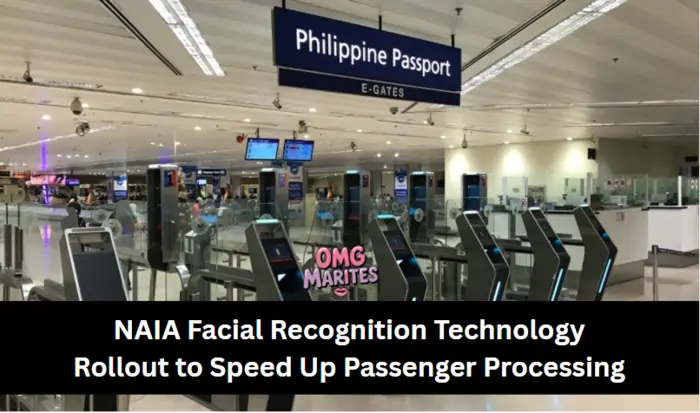The Ninoy Aquino International Airport (NAIA) is set to enhance its passenger processing system with the upcoming facial recognition technology rollout expected within the next six months. This modernization effort aims to make travel faster and more convenient for international and domestic passengers alike.
During his recent visit to NAIA Terminal 3, President Ferdinand Marcos Jr. highlighted the new technology as part of a broader push to improve airport efficiency. He explained that passengers will no longer be required to present physical identification like passports at checkpoints; instead, their faces will serve as their IDs.

“We’re trying to make life easier and faster for them… They will no longer be asked to present whatever IDs. Just their faces, that will be the ID,” said President Marcos.
This initiative particularly benefits Overseas Filipino Workers (OFWs), tourists, and domestic travelers, reducing the time spent lining up at immigration and other checkpoints.
Installation Timeline and Infrastructure Upgrades
The facial recognition technology is planned for installation within six months, as part of the ongoing infrastructure improvements led by the NAIA Infrastructure Corporation (NNIC). These upgrades include new facilities such as the OFW Immigration Annex, OFW Lounge and Rest Area, Transport Network Vehicle Service Area, and the enhanced arrival service area—all designed to provide greater comfort and efficiency.
Future Capacity Expansion with NAIA Terminal 5
Looking ahead, NNIC Chairman Ramon Ang revealed that the upcoming NAIA Terminal 5 will significantly boost the airport’s capacity. Scheduled to open in 2026, Terminal 5 will accommodate up to 35 million passengers annually when combined with NAIA Terminal 2.
This expansion aligns with the government’s vision of making NAIA a modern, world-class gateway, easing congestion and improving passenger experience.
Positive Impact on Passenger Experience
The implementation of facial recognition technology promises to ease bottlenecks that have long plagued NAIA, particularly during peak travel seasons. By streamlining passenger verification, the airport aims to shorten wait times and enhance security simultaneously.
President Marcos emphasized the importance of adopting the best available technology to facilitate smooth entry and exit for all travelers, especially emphasizing the needs of the Filipino diaspora.
The NAIA facial recognition technology rollout is a significant step toward modernizing the Philippines’ busiest airport, demonstrating the government’s commitment to improving infrastructure and passenger services. As installation progresses over the coming months, travelers can look forward to a faster, safer, and more seamless airport experience.
References:
- GMA Integrated News, “Facial recognition tech to be installed in NAIA in 6 months,” May 2025
- Official statements from the Office of the President, Philippines
- ABS-CBN.com, NAIA to have facial-recognition e-gates in 6 months, 2025

Maria Theresa Mondragon, better known online as Antie Marites, is a 33-year-old Filipina content creator who’s turning “chismis” into credible news and meaningful conversation.
With a knack for storytelling and a passion for public service updates, Antie Marites creates relatable, informative, and bite-sized news content for the digital Pinoy. Whether it’s trending headlines, government announcements, or everyday life in the Philippines, she breaks it down in a way that’s clear, fun, and easy to understand—no filter, no fake news.
She’s the tita who sips her kape while scrolling DBM updates and turns it into your next viral TikTok.She’s also your go-to source for “real talk sa real-time news.”
Follow her journey and daily chika on:
📲 Facebook: OMGMarites
📱 TikTok: @omgmarites2025
